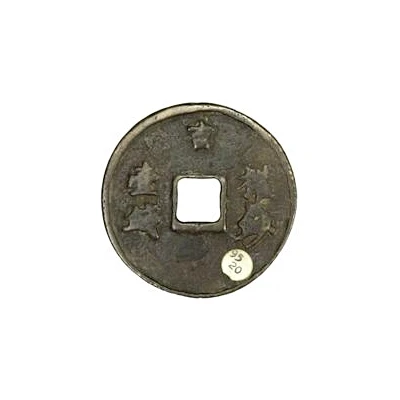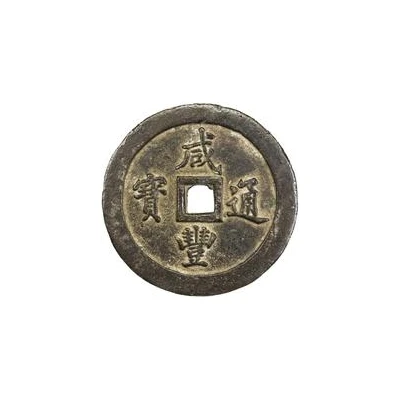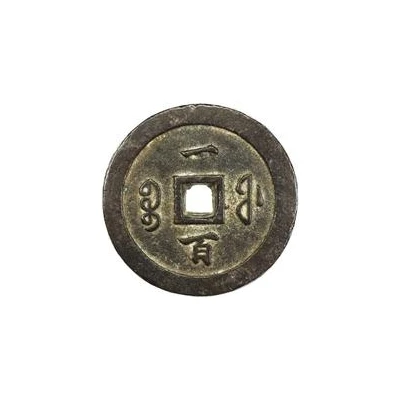


© Stephen Album Rare Coins
1 Qian - Zhizheng Zhibao ND
| Bronze | 26.31 g | 50 mm |
| Issuer | Empire of China |
|---|---|
| Emperor | Yuan dynasty › Ukhaghatu Khan "Huizong" (元惠宗) (1333-1368) |
| Type | Standard circulation coin |
| Years | 1350-1368 |
| Value | 1 Qian = 100 Cash |
| Currency | Cash (621-1912) |
| Composition | Bronze |
| Weight | 26.31 g |
| Diameter | 50 mm |
| Shape | Round with a square hole |
| Technique | Cast |
| Orientation | Medal alignment ↑↑ |
| Demonetized | Yes |
| Updated | 2024-10-04 |
| Numista | N#221496 |
|---|---|
| Rarity index | 100% |
Reverse
Five Chinese ideograms read top, right to the bottom, and left to the bottom.
Script: Chinese (traditional, regular script)
Lettering:
吉
壹 權
錢 鈔
Translation:
Ji / Quan Chao / Yi Qian
Ji / Equivalent in paper money / 1 Qian
Designer: Zhou Boqi
Edge
Plain
Comment
The Ji is for Ji'an mint, Jianxi.In 1350, chancellor Tuotuo attempted to reform the currency system of the Yuan dynasty by printing more paper money and creating large coins that promised to back the paper money. Even so, people hated the paper money because it could be easily damaged and be made un-redeemable, and the people were angry to the point that rebellions broke out in the Southern regions. The government printed even more paper money to fund they the military to fight the rebellions; however, that caused a hyperinflation.
People ended up disregarding the paper money and went back to a bartering system, making even the use of circulating coins a rarity.
Interesting fact
The 1 Qian - Zhizheng (Zhibao) ND (1350-1368) coin from the Empire of China was used as a form of currency during the reign of the Mongol Empire, which was the first foreign dynasty to rule all of China. This coin was made of bronze and weighed 26.31 grams, making it a significant piece of currency at the time.

